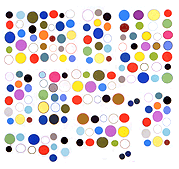Video clip by jeronimo jh of the Columbia Gagaku Ensemble performing at St. Paul's chapel last week [Vine]
This crop hides actual audience size (much larger than what's shown) to squeeze in as many of the ensemble members as possible. The acoustics in St Paul's astound, creating an ideal setting for this medieval proto-ambient form of Japanese classical music. The performers file in, in stocking feet, and take their positions, seated in half-lotus, and the shō players lead off (as I recall). The music consists of antiphonal call-and-response among various woodwind groups, with drums, koto, and other percussive strings adding punctuation. The effect is a drifting or floating wall of sound, meant in earlier times as a component of Shinto ritual (to inspire a rice crop, say). In modern times we hear this music echoed in Harry Partch or Steve Reich.
The Columbia Gagaku Ensemble is a diverse mix of ages, sexes and backgrounds -- the percussionists tended to be older, for whatever reason, and wonderfully poker-faced. Everyone had their characteristic look and stance with an instrument but the dress was uniform black and the mien was serious, as befits religious ritual (in a Western church, no less). The dedication to the details of an obscure niche of music and performance impressed. Very ethereal evening.
(Thanks to Ensemble member and shō player Alessandra Urso for the invite.)


